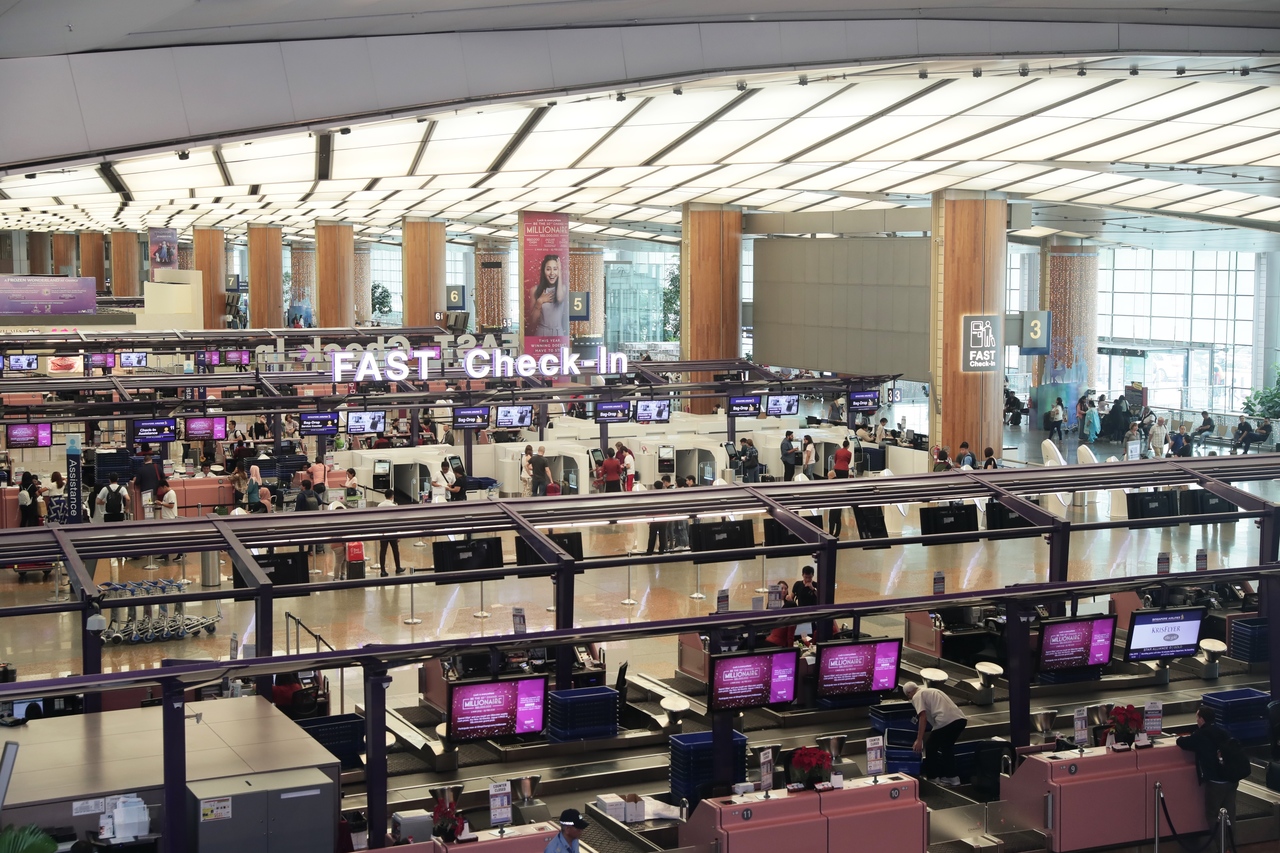Changi Airport on track for record passenger numbers in 2019
Strong demand for regional flights boosting overall traffic despite challenges facing sector
Sign up now: Get ST's newsletters delivered to your inbox

Between January and November last year, Changi Airport handled 61.9 million passengers.
ST PHOTO: KELVIN CHNG
Wong Kai Yi
Follow topic:
Global economic headwinds and geopolitical tensions have hit the aviation industry worldwide, but Changi Airport has held its own, with strong demand for regional flights boosting overall passenger traffic.
This is despite political issues in Hong Kong and challenges in the Indian market which saw the collapse of a major carrier, Jet Airways.
Between January and November last year, Changi handled 61.9 million passengers, with more than four in 10 coming from South-east Asian countries.
Another 26 per cent came from North-east Asia, Changi Airport Group (CAG) told The Straits Times.
This is despite the number of weekly services to Hong Kong having been cut from about 130 as of Dec 1, 2018, to 115 now.
The demise of Jet Airways also resulted in the loss of nine daily India-Singapore services earlier last year. Some of the reduced services have since been replaced by other Indian carriers.
The final annual tally for last year is not in yet, but based on its performance in the first 11 months of the year, Changi Airport is well on its way to busting 2018's record traffic of 65.6 million passengers.
It is the world's seventh-busiest international airport.
While Asia remains key to the air hub's future, CAG will continue to pursue growth in other regions, including Europe, said the airport's managing director for air hub development, Mr Lim Ching Kiat.
With national carrier Singapore Airlines and other airlines adding flights, Changi's connectivity to the United States and Europe "has reached new highs", he said.
Establishing links to other cities in Europe, including Geneva, Madrid, Oslo and Vienna, is next on the radar, he added.
In these key cultural and business centres in Europe, there is strong demand for flights not just to Singapore but also the wider South-east Asian and South-west Pacific regions, Mr Lim said, adding that Singapore could be a "convenient gateway" for those travellers.
In North America, Vancouver, Toronto and Chicago are the next key targets, Mr Lim added.
The airport is also looking to strengthen connectivity to Russia and the Central Asian region, with links to cities such as Almaty, Astana and St Petersburg.
Mr Lim said: "We have seen good growth in origin-destination demand from these regions to Singapore and beyond, fuelled by growing business and trade links, as well as leisure demand to new destinations," he said.
For now, though, the bulk of inbound air traffic to Singapore will continue to come from Asia, particularly from the burgeoning Indonesian and Vietnamese markets, said Mr Shukor Yusof, head of Malaysia-based aviation consultancy Endau Analytics.
The International Air Transport Association (Iata) expects Indonesia and Vietnam to add 135 million and 112 million new passengers, respectively, within the next 20 years.
Looking ahead, Iata expects this year to be better for the industry.
"It appears that 2019 will be the bottom of the current economic cycle, and the forecast for 2020 is somewhat brighter," said the association's director-general and chief executive Alexandre de Juniac last month.
With Singapore's aviation sector accounting for about 6 per cent of the Republic's gross domestic product and supporting more than 160,000 jobs, it is important for the air hub to continue to grow.
As a key financial centre, Singapore must also have "good and reliable air transport connections", said Singapore Management University transport economist Terence Fan.
"You need to have links with other financial centres in the world, and Singapore certainly has that, with connections to places like London and New York," he said.

